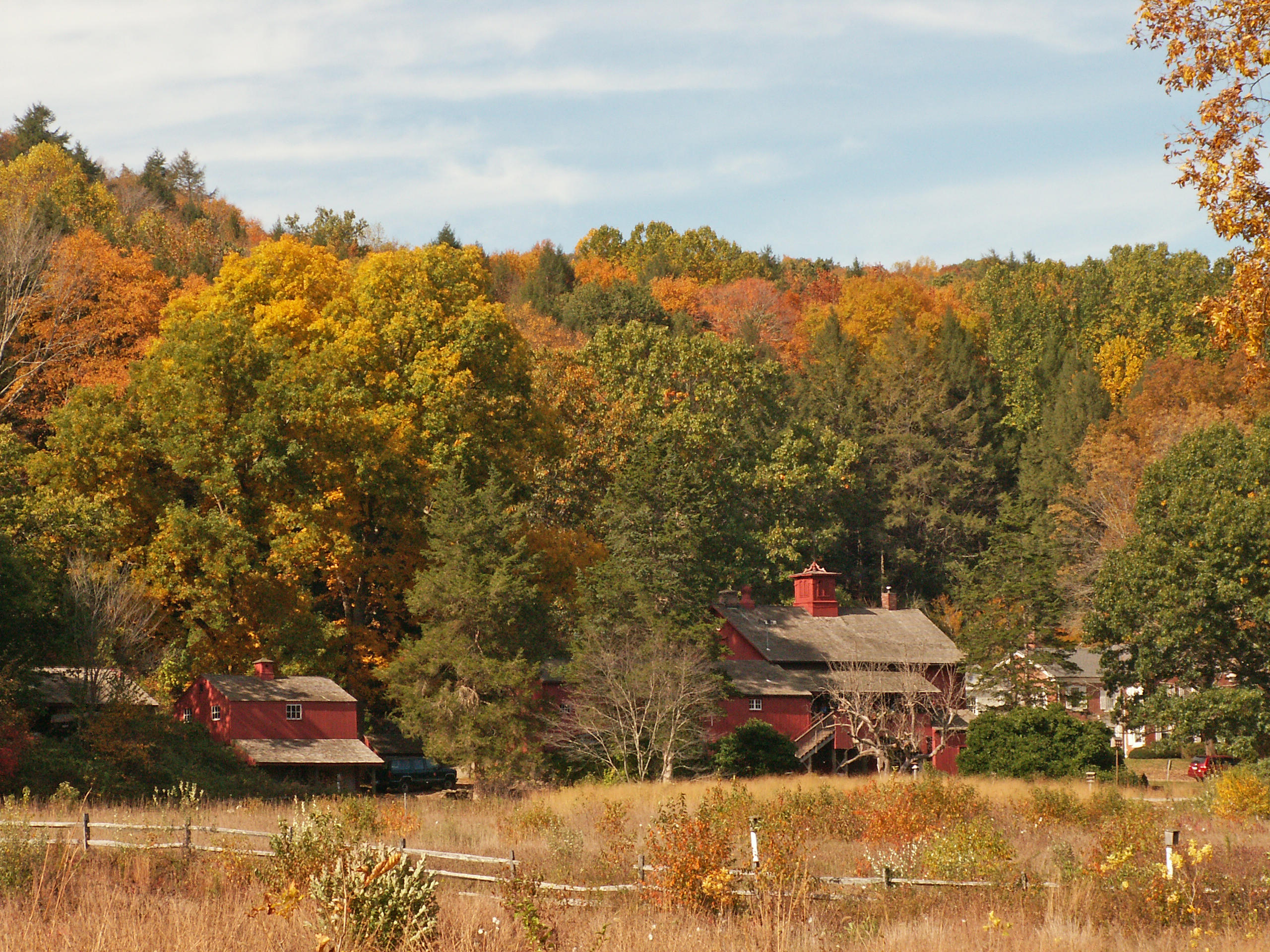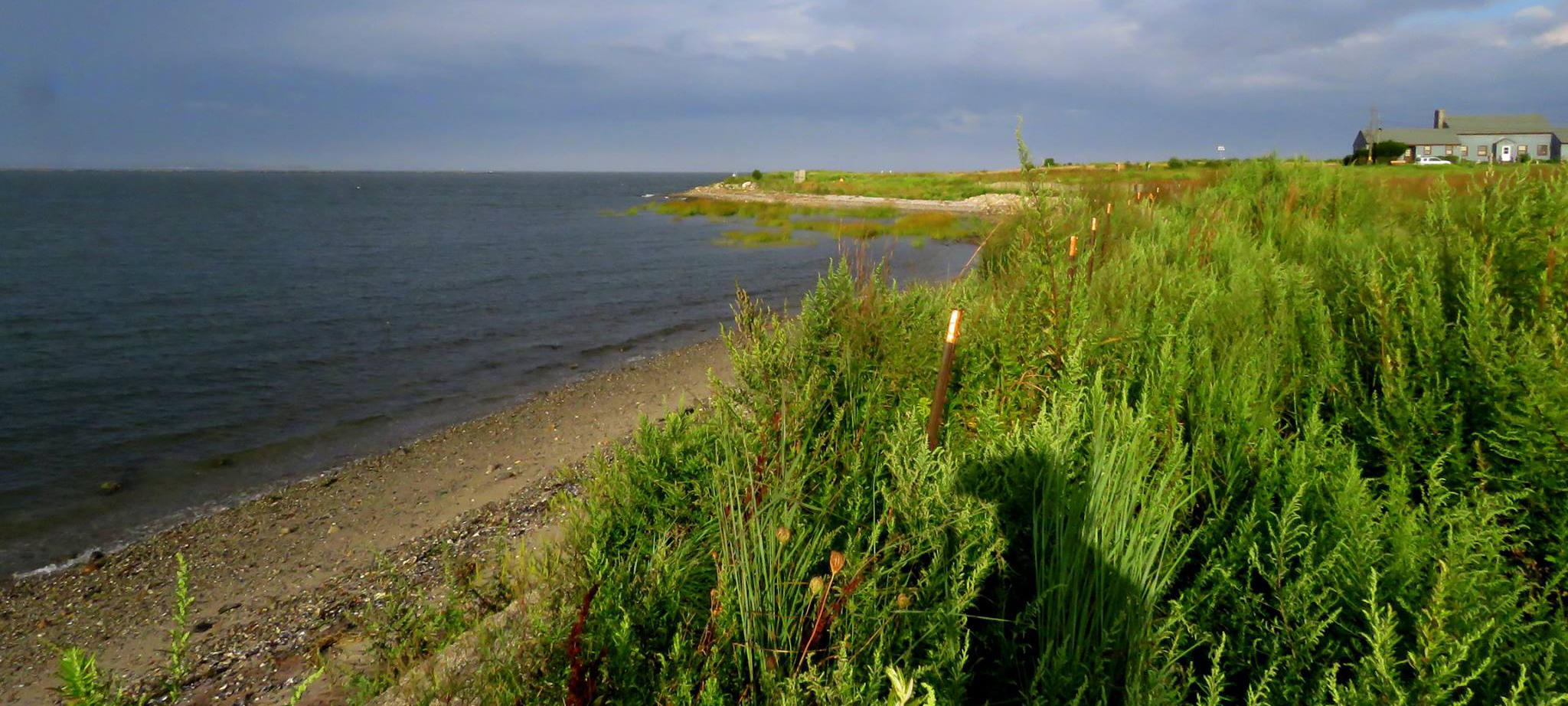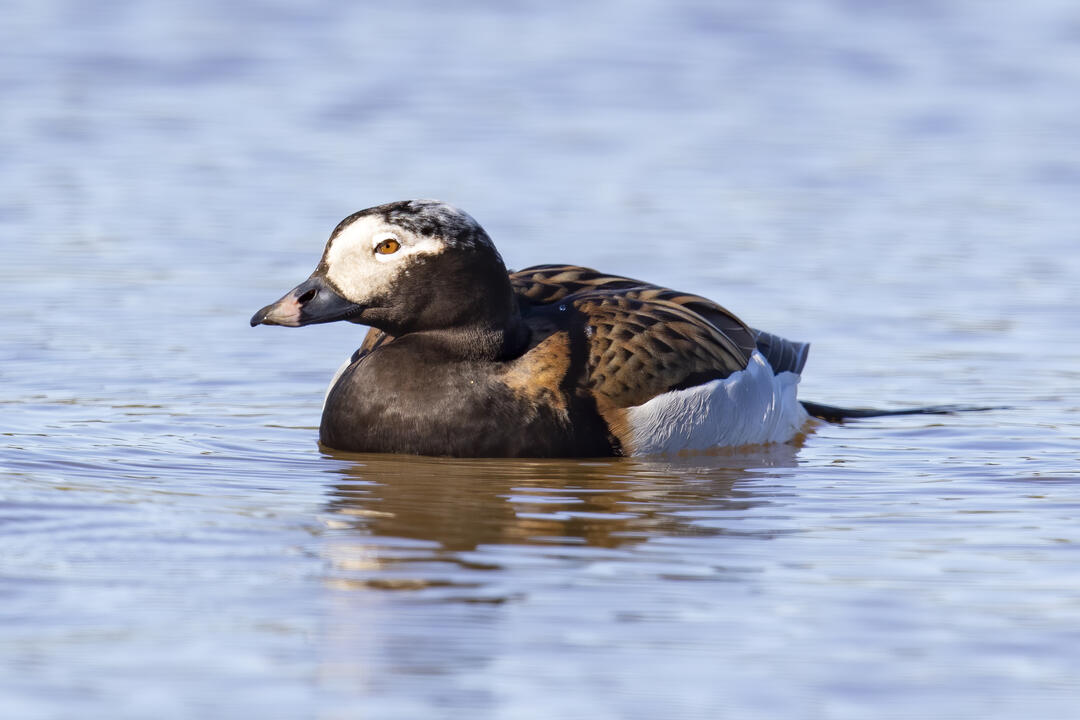For such a small state, Connecticut is quite a gem when it comes to birding. The land spans a length of just 110 miles and is comprised of habitats ranging from offshore islands to grasslands to tracts of woodland. With this variety of habitat available, all types of birds can use the landscape of Connecticut for breeding, migrating, or wintering depending on their life history.
Almost 450 bird species have been seen in this small state, a number that is comparable to larger states along the Atlantic Coast. While any area with suitable habitat may be good for birding, there are notable hotspots across the state where you are guaranteed to see interesting species throughout the year. So, grab your binoculars and start exploring the areas below to boost your list of bird species!
Stratford Point (Stratford)
Stratford Point juts out into Long Island at the mouth of the Housatonic River. A coastal sanctuary managed by Audubon Connecticut, this site features an open grassland, rocky shorelines, a pollinator garden, a growing saltmarsh, and a coastal forest. These habitats make for exciting birding year-round.
In the fall, flocks of shorebirds such as the Semipalmated Sandpiper, Semipalmated Plover, and Black-bellied Plover gather by the hundreds to roost at Stratford Point. The shoreline becomes dotted with resting shorebirds that come from Milford Point across the Housatonic River (another excellent birding spot) after feeding. Later in fall, sparrows drop by the garden or grassy areas to feed. It is important to look hard at each sparrow because there may be a Clay-colored Sparrow or Grasshopper Sparrow among the more common sparrow species.
Once the cold weather comes around, wintering duck species such as the Long-tailed Duck and American Wigeon spend the season feeding in the water off of Stratford Point. On land, it is not unusual to see a Northern Harrier swooping across the meadow in search of a meal. Uncommon owl species like the Snowy Owl and Short-eared Owl are occasional visitors too! As the winter turns into spring, it is likely that Northern Gannets will fly across the point on their journey north.
Springtime brings a multitude of songbird migrants. Warblers making their way north stop in the coastal forest to rest and feed. Although well hidden in the trees, they will pop out of their cover periodically and show off their bright breeding plumage.
View Stratford Point eBird sightings
White Memorial Foundation (Litchfield & Morris)
White Memorial Foundation is a nature preserve, as well as a site for environmental education and research. The diverse mixture of habitats includes mature deciduous and evergreen forests, as well as grasslands and shrublands that are managed for various stages of succession. In addition, aquatic habitats in the form of wetlands, vernal pools, streams, and swamps are on the property. As a recognized Important Bird Area and one of the best birding sites in the state, White Memorial Foundation has approximately 35 miles of woodland roads, trails, and boardwalks for ease of access.
Since 1958, 246 species have been recorded at White Memorial Foundation, and 116 of these have been confirmed breeding at one point. It is the wide diversity of habitats, including a variety of successional stages and a good mix of both northern and southern forest vegetation type, as well as extensive wetland complexes that truly makes White Memorial important to birds in Connecticut. Because of the diversity of habitats, White Memorial supports 18 breeding warbler species.
State-listed species, including American Kestrels, Cooper’s and Sharp-shinned Hawks, have nested at White Memorial. Redheads, mallards, Blue-winged Teal, American Coot, Pied-billed Grebes, and American Black Ducks can all be found on Bantam Lake in migration, and more than 2,500 Common Mergansers use the lake during December. The extensive wetlands on White Memorial Foundation are probable nesting grounds for Common Moorhen, Pied-billed Grebe, Blue-winged Teal, Least Bittern, and American Bittern, all rare and state-listed species.
View White Memorial eBird sightings
East Rock Park (New Haven)
East Rock Park is another Important Bird Area and a noteworthy spring migrant destination. Owned by the City of New Haven, it is a popular hiking spot within the city that features wooded trails and a trap rock ridge. The park is a large green space within a highly developed, urban area. When warblers and other songbirds migrate along the coast, East Rock is a stopover hotspot amidst the buildings and roads in the city. It is also an important nesting site for raptors and other species. More than 200 species have been spotted in this urban park in total.
Many warbler species can be observed here in spring, including Canada Warbler, Northern Waterthrush, Nashville Warbler, and Magnolia Warbler. Watch for different species of swallow catching insects over Mill River in the park too. On the trap rock ridge, it is worthwhile to scan for signs of nesting Peregrine Falcon or Common Raven, two species that have frequently bred here in recent years.
While East Rock is quieter in summer, there are still interesting birds nesting in the shrubs and trees. Species such as the Great Crested Flycatcher, Worm-eating Warbler, and Rose-breasted Grosbeak raise young in the park each year.
Other rare bird species that have been spotted at East Rock include Chuck-will’s Widow, Hermit Warbler, Yellow-throated Warbler, Summer Tanager, and Blue Grosbeak.
View East Rock Park eBird sightings
Station 43 (South Windsor)
Station 43 is an approximately 10-acre reserve and Important Bird Area that is owned by the Hartford Audubon Society. It consists of a pond and associated freshwater wetland complex. It is situated in the Connecticut River floodplain in South Windsor. This section of the Connecticut River floodplain forms a sizeable undeveloped block of several thousand acres of farmland, shrubland, and floodplain forest existing on both sides of the river.
For more than 100 years, Station 43 has been recognized as one of the most critical habitats for birds in the Hartford area and is still acknowledged today as an essential site by the ornithological community. The marsh and the surrounding area serve as one of only a small handful of breeding areas for several listed species, including Least Bittern. American Bittern, Blue-winged Teal, and King Rail may also nest in the marsh.
Station 43 is of the few nesting habitats remaining in the Hartford area for Soras, Virginia Rails, and Marsh Wrens, and one of the most important stopovers and wintering areas in Connecticut for Rusty Blackbirds. It is also an important stopover point for birds migrating along the Connecticut River corridor, including waterfowl and songbirds (notably sparrows), and receives significant usage by raptors in the winter months. The nearby agricultural fields and grasslands are also significant habitats. Bald Eagles use the area in migration and the winter, and may nest within foraging distance.
View Station 43 eBird sightings
Hammonasset Beach State Park (Madison)
Hammonasset Beach State Park is a state-owned treasure that borders Long Island Sound for about 10,000 feet and the Hammonasset River for about 5,000 feet. The habitat consists of brackish tidal marsh and young forest upland. The unique location of several of the upland areas within the marsh and grassland peninsula creates an effective migrant trap. The site is a recognized Important Bird Area and unusual in having an array of habitat types in close proximity to one another, making it especially valuable for education.
The federally and state threatened Piping Plover nests on the river beach, along with the state threatened Least Tern, and special concern species American Oystercatcher. Several species of wading birds use the marsh as foraging habitat in the nesting and post-nesting dispersal seasons. This marsh is one of the only nesting areas for Saltmarsh Sparrow in the state. Due to the park’s coastal location, it provides important migratory stopover habitat for landbirds, shorebirds, and raptors.
There is also significant shorebird stopover habitat available, particularly for grassland species, including Killdeer, Black-bellied and American Golden Plover, and Pectoral, Buff-breasted, and Upland Sandpiper. Cedars, other evergreens, and shrub habitat offer significant roosting habitat for migrating owls such as Saw-whet, Barn Owl, and Long-eared Owl. The park is a regionally important wintering/migration habitat for open country songbirds such as Snow Bunting and Horned Lark. The marsh is a regionally significant wintering/migration area for American Bittern.
View Hammonasset Beach State Park eBird sightings
Harkness Memorial State Park (Waterford)
Harkness Memorial State Park is managed by the State of Connecticut and encompasses about 230 acres of land. Although the site's mansion and coastal beauty are a big draw for the general public, it's bird populations attract birders from all over the state to observe shorebirds and waterbirds along the eastern coast of Connecticut.
Many species can be seen at Harkness, depending on the season. Piping Plover and Least Tern use the site for nesting, and long-legged waders are frequently found foraging in Goshen Cove or adjacent to Waterford Beach Park. During migration and in winter, there can often be hundreds of Canada Geese, and the occasional Snow Goose too. In the water, species such as Brant, Common Eider, Common Goldeneye, Mallard, Great Black-Backed Gull, and Red-breasted Merganser, are common. Harkness is one of the best places in the state to find Common Eider, a species that is harder to find along the west coast of Connecticut. The area also serves as stopover habitat for shorebirds and songbirds during spring and fall migration.
View Harkness Memorial State Park eBird sightings
Yale Myers Forest (Ashford, Eastford, Union, and Woodstock)
The Yale Myers Forest Focal Area consists mainly of forested lands owned by Yale University and the State of Connecticut. Yale Myers Forest, at 7,840 acres, is comprised of mostly mixed hardwoods with a large component of hemlock, several scattered white pine stands, and occasional red pine plantations. There are numerous small ponds created by beaver activity. The site is of one of Connecticut's most remote forest areas, although suburban commuter dwellings are beginning to surround the area.
This is an important site for forest-nesting birds, which require large tracts of land. Yale Myers Forest is a highly productive site for these birds due to the hundreds of acres of unfragmented forest. Species such as the Wood Thrush have been hit hard by brood parasitism from the Brown-headed Cowbird. Large tracts of unfragmented forests offer little chance to these brood parasites of reaching forest nesting birds.
With the various habitats at this site, the focal area has tremendously high biodiversity. This is one of the last places for Ruffed Grouse in the state, a game species that needs early successional forest habitat for survival. The site is also a warbler migration stopover, with over 30 species documented regularly. With the broad area of wetland habitat, the site may also be an important breeding ground for wading bird species. Great Blue Heron and Virginia Rail are documented as breeders, but more study is needed to determine the numbers and species of other possible nesting waterbirds.
View Yale Myers Forest eBird sightings
Mansfield Hollow State Park (Mansfield)
The habitats at Mansfield Hollow State Park include a large reservoir, extensive deciduous and coniferous forest interspersed with areas of shrubland and open field habitat, an area of sandy pitch pine habitat, grassland habitat, and scattered wetlands throughout the woodland.
Mansfield Hollow’s mixed woodlands, shrublands, and pine barren habitat support relatively high densities of nesting high-conservation-priority species such as Whip-poor-will, Prairie and Blue-winged Warblers and Eastern Towhees, as well as Brown Thrashers. These same woodlands serve as a migratory stopover for Louisiana Waterthrush, Black-and-White Warblers, and Worm-eating Warblers, all of which are also high conservation priority species. The area is relatively large, and much is already protected in the park. Thus, effective management, particularly for early successional species, could greatly enhance its contribution to the state's birds. Exposed mudflats are used extensively by migrating shorebirds when water levels are low in the reservoir, and when conditions are right, the area is one of the top inland shorebird stopover areas in the state. Around the dam, it is possible to see up to six species of swallows flying.
View Mansfield Hollow State Park eBird sightings
Audubon Birding Locations You Won't Want to Miss
In addition to these birding hotspots, Audubon owns and manages more than 4,600 acres of natural beauty and prime bird habitat in Connecticut that you'll want to add to your visit list. Our nature education centers in Greenwich, Sharon, and Southbury serve as gateways to our nature sanctuaries and hubs for our many educational opportunities and programs. Our active Connecticut chapters also provide local birding and education offerings.
Explore Audubon Connecticut locations on your own or join an upcoming guided bird walk or field trip. Visit ct.audubon.org/experience-nature to find a center, sanctuary, and chapter near you.


Need help identifying birds? There's an app for that. Check out the Audubon Bird Guide mobile app.
Article written by Genevieve Nuttall, former Bird Conservation Programs Associate, Audubon Connecticut
How you can help, right now
Get Involved
There are so many great ways you can get involved with Audubon Connecticut and make a difference for both the wildlife and the people who call Connecticut home.
Visit Our Centers
Connect with our nature centers in Greenwich, Sharon, and Southbury. Each unique center offers trails, educational resources, conservation opportunities, and more.
Support Us
Through land stewardship, science, education, and advocacy, Audubon Connecticut works across the state to preserve habitat and protect bird species that are of state, national, and global concern.





